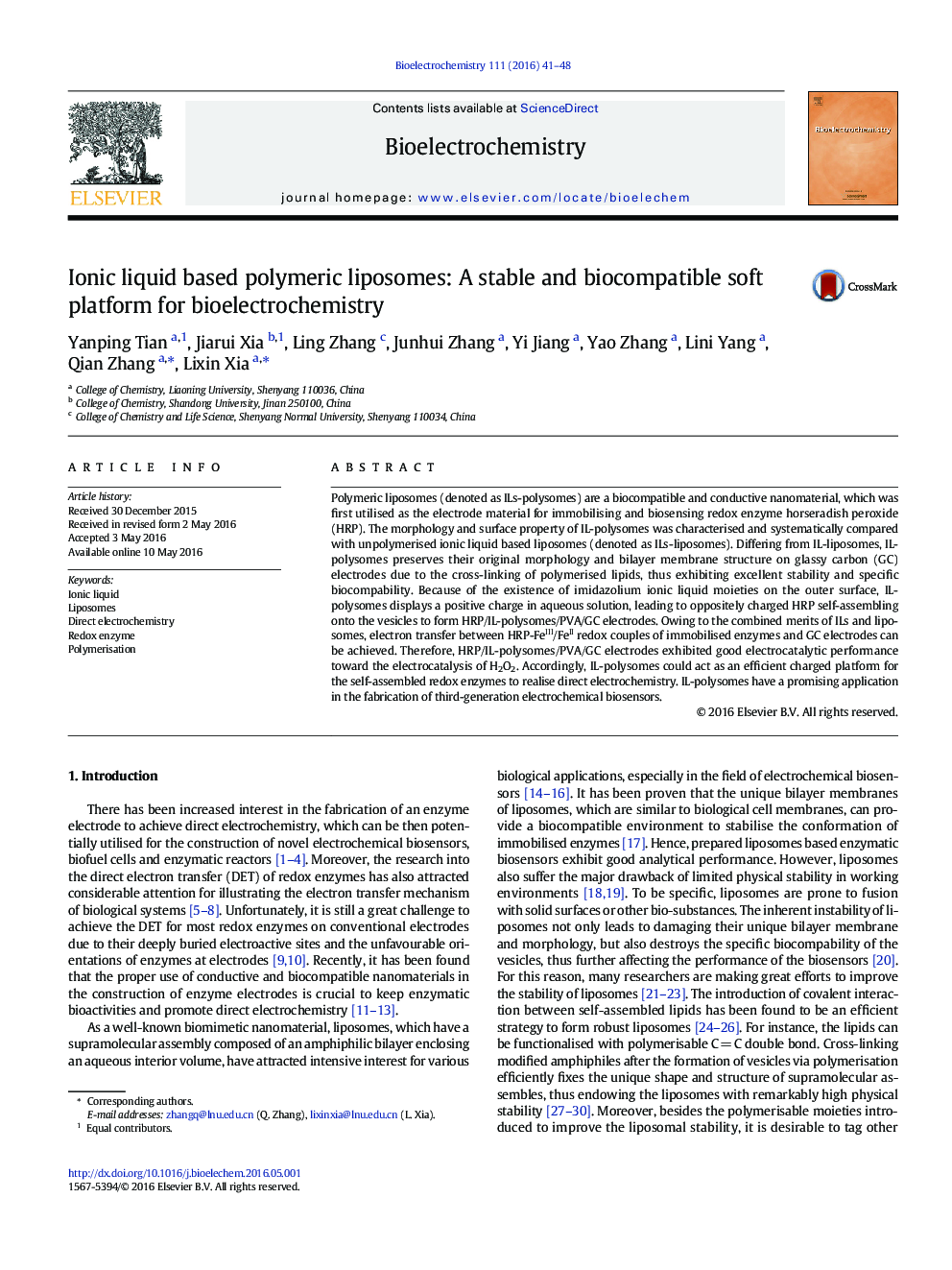| Article ID | Journal | Published Year | Pages | File Type |
|---|---|---|---|---|
| 1266835 | Bioelectrochemistry | 2016 | 8 Pages |
•ILs-polysomes exhibited excellent stability for the construction of an enzyme electrode.•Direct electron transfer was achieved between the enzyme and the electrode.•The enzyme electrode exhibited good electrocatalytic performance toward H2O2.
Polymeric liposomes (denoted as ILs-polysomes) are a biocompatible and conductive nanomaterial, which was first utilised as the electrode material for immobilising and biosensing redox enzyme horseradish peroxide (HRP). The morphology and surface property of IL-polysomes was characterised and systematically compared with unpolymerised ionic liquid based liposomes (denoted as ILs-liposomes). Differing from IL-liposomes, IL-polysomes preserves their original morphology and bilayer membrane structure on glassy carbon (GC) electrodes due to the cross-linking of polymerised lipids, thus exhibiting excellent stability and specific biocompability. Because of the existence of imidazolium ionic liquid moieties on the outer surface, IL-polysomes displays a positive charge in aqueous solution, leading to oppositely charged HRP self-assembling onto the vesicles to form HRP/IL-polysomes/PVA/GC electrodes. Owing to the combined merits of ILs and liposomes, electron transfer between HRP-FeIII/FeII redox couples of immobilised enzymes and GC electrodes can be achieved. Therefore, HRP/IL-polysomes/PVA/GC electrodes exhibited good electrocatalytic performance toward the electrocatalysis of H2O2. Accordingly, IL-polysomes could act as an efficient charged platform for the self-assembled redox enzymes to realise direct electrochemistry. IL-polysomes have a promising application in the fabrication of third-generation electrochemical biosensors.
